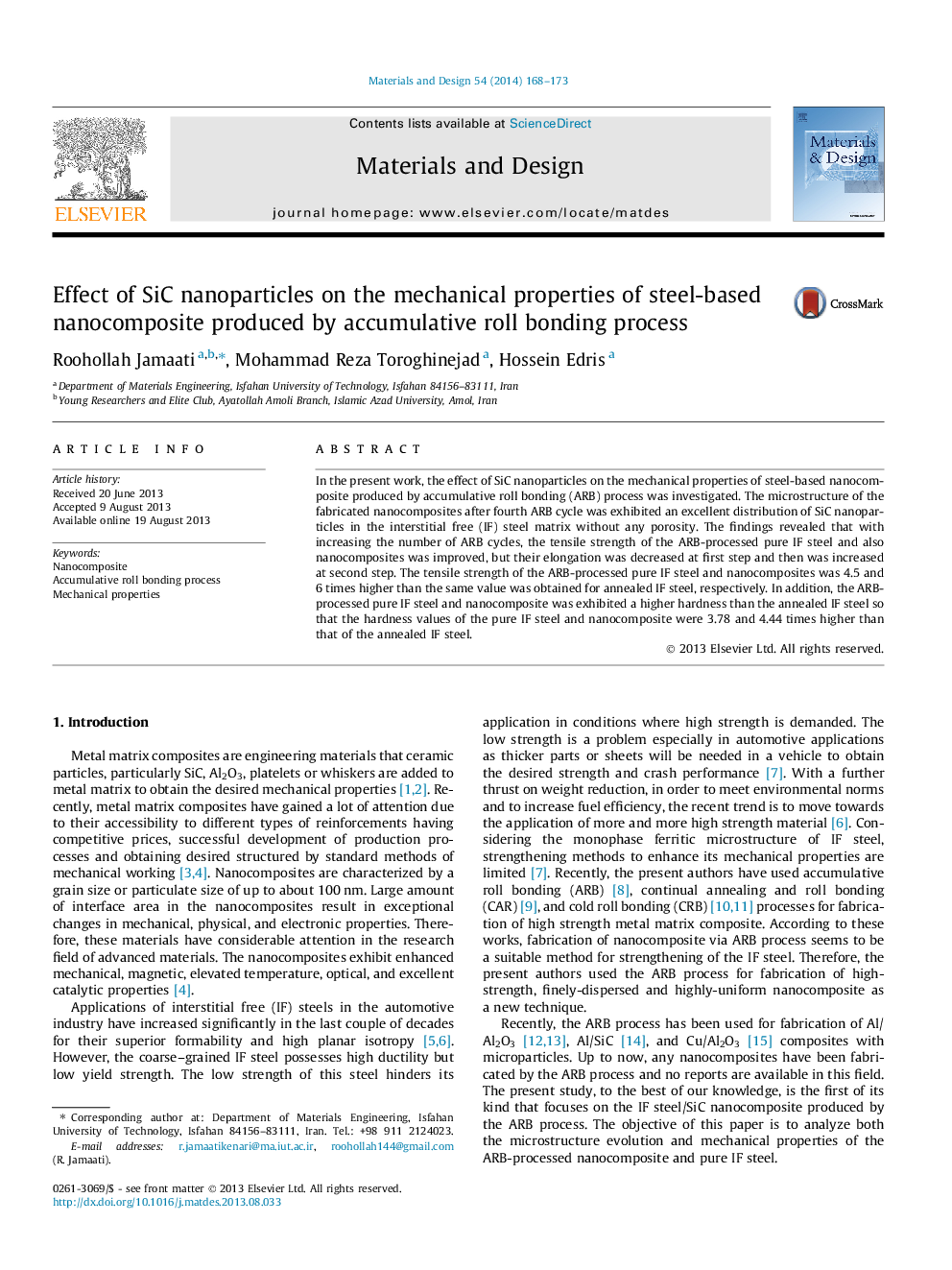| Article ID | Journal | Published Year | Pages | File Type |
|---|---|---|---|---|
| 829626 | Materials & Design (1980-2015) | 2014 | 6 Pages |
•By increasing the number of cycles, better distribution of particles was obtained.•The ARB-processed nanocomposite exhibited higher strength than the pure IF steel.•Elongation of samples increased in second step as the number of cycles increased.•The ARB-processed nanocomposite exhibited higher hardness than the pure IF steel.
In the present work, the effect of SiC nanoparticles on the mechanical properties of steel-based nanocomposite produced by accumulative roll bonding (ARB) process was investigated. The microstructure of the fabricated nanocomposites after fourth ARB cycle was exhibited an excellent distribution of SiC nanoparticles in the interstitial free (IF) steel matrix without any porosity. The findings revealed that with increasing the number of ARB cycles, the tensile strength of the ARB-processed pure IF steel and also nanocomposites was improved, but their elongation was decreased at first step and then was increased at second step. The tensile strength of the ARB-processed pure IF steel and nanocomposites was 4.5 and 6 times higher than the same value was obtained for annealed IF steel, respectively. In addition, the ARB-processed pure IF steel and nanocomposite was exhibited a higher hardness than the annealed IF steel so that the hardness values of the pure IF steel and nanocomposite were 3.78 and 4.44 times higher than that of the annealed IF steel.
